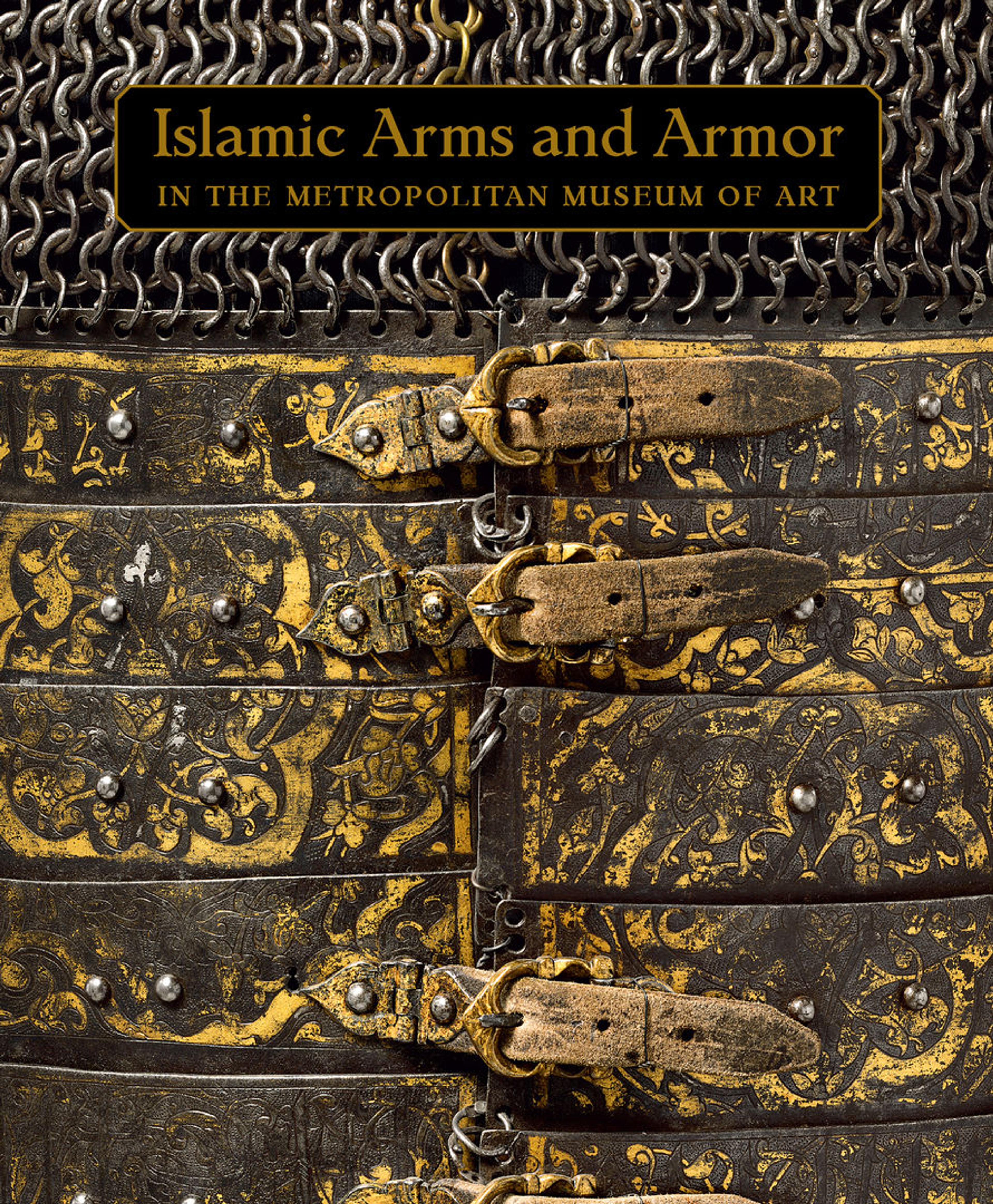Dagger (Jambiya) with Scabbard
This Arab dagger was worn by Sharif Husayn ibn 'Ali, amir of Mecca (r. 908–16) and king of the Hejaz (r. 1916–24), and then by his son, Faisal, briefly king of Syria (1920) and subsequently king of Iraq (r. 1921–33). The pierced blade is a late version of an Ottoman Turkish type of the sixteenth century. The gold-damascened inscriptions include a phrase referring to the dagger: “I admire, as the [great] art of the Arabs, the gilded dagger.”
Artwork Details
- Title:Dagger (Jambiya) with Scabbard
- Date:hilt and scabbard, late 19th–early 20th century; blade, 18th–19th century
- Culture:hilt and scabbard, Arabian, Jedda; blade, Iranian or Turkish
- Medium:Steel, ivory, wood, silver, gold, rubies, emeralds
- Dimensions:L. 12 3/4 in. (32.4 cm); dagger: L. 12 1/16 in. (30.6 cm); L. of blade 7 1/2 in. (19 cm); W. 1 13/16 in. (4.6 cm); Wt. 8.4 oz. (238.1 g); scabbard: L. 8 1/2 (20.5 cm); Wt. of scabbard 5.6 oz. (158.8 g)
- Classification:Daggers
- Credit Line:Gift of Mrs. Anna L. Fisher, 1922
- Object Number:22.107a, b
- Curatorial Department: Arms and Armor
More Artwork
Research Resources
The Met provides unparalleled resources for research and welcomes an international community of students and scholars. The Met's Open Access API is where creators and researchers can connect to the The Met collection. Open Access data and public domain images are available for unrestricted commercial and noncommercial use without permission or fee.
To request images under copyright and other restrictions, please use this Image Request form.
Feedback
We continue to research and examine historical and cultural context for objects in The Met collection. If you have comments or questions about this object record, please contact us using the form below. The Museum looks forward to receiving your comments.
